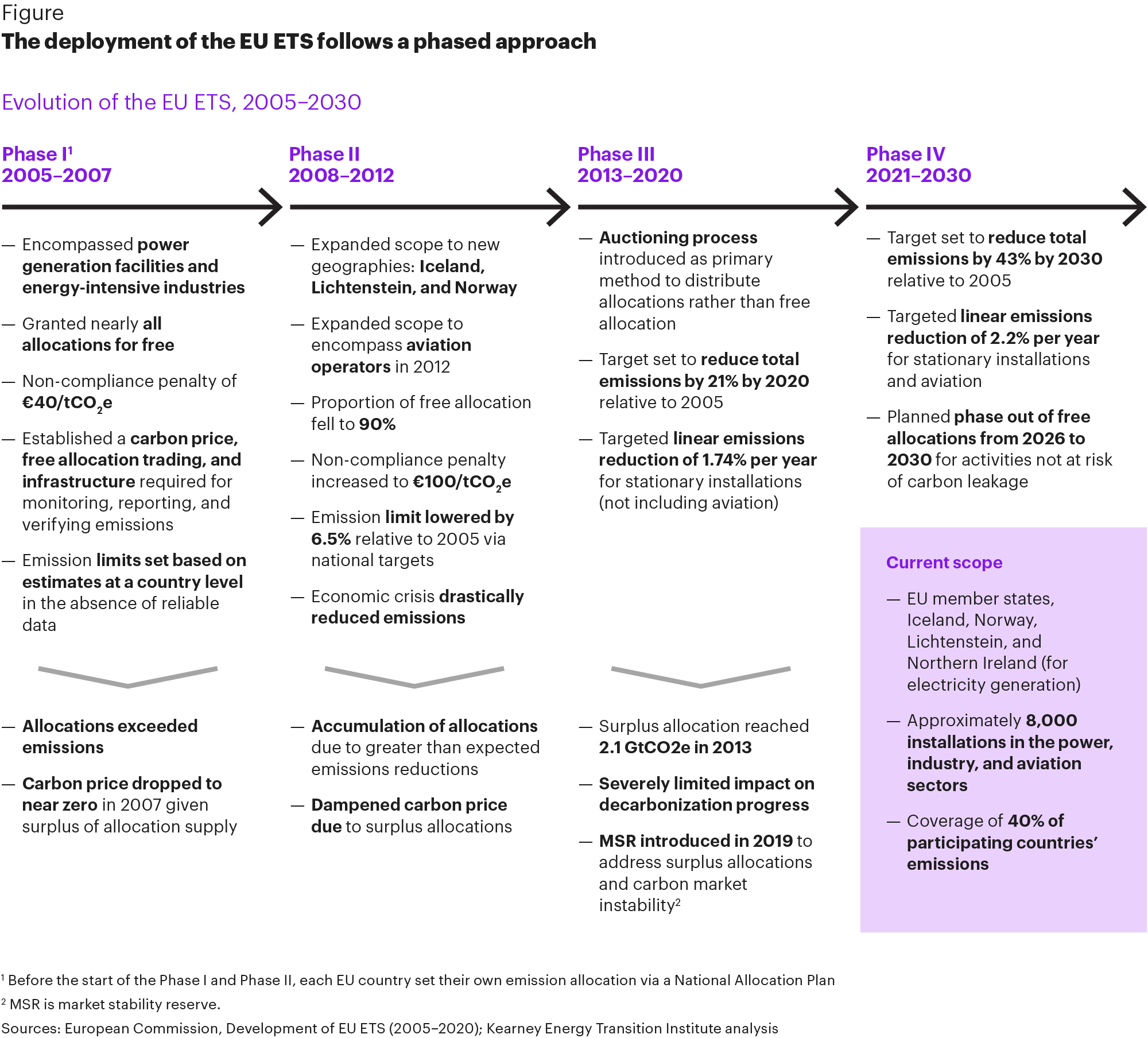EU - ETS Digital Tool
Please note that the tool uses public data alone—namely, information sourced via the Union Registry, which is accurately presented without data loss or manipulation. Because an installation may fail to submit the data required by the Union Registry for reporting on April 30, discrepancies may arise between the tool and other publications that use data reported later in the annual compliance cycle. For visualization purposes, verified allocations from different aviation companies were regrouped as a unique entity in a single location in the corresponding country.
A retrospective view on the EU ETS offers insight into the progress of decarbonization efforts. These include emissions reductions realized via the introduction of a new technology or policy intervention, as well as the identification of areas requiring attention, such as power. High-level extrapolation of historic trends also offers an estimation of future emissions for comparison with climate ambitions.
However, the EU ETS is evolving quickly, extending its scope, and revising the distribution of allocations. The use of free allocations will be phased out between 2026 and 2034, placing greater financial pressure on emitters, who—in the absence of free allocations—will eventually pay for the full extent of their emissions. The withdrawal focuses on sectors at the highest risk of relocating operations outside the EU, a practice known as carbon leakage. Such sectors will receive 100 percent of allocations for free. For less exposed sectors, the phase-out is expected to decrease from a maximum of 30 percent in 2026 to zero by the end of 2030.
The introduction of the Carbon Border Adjustment Mechanism (CBAM) in 2026 complements the phase-out of free allocations by requiring a price to be paid for the embedded emissions of certain goods imported to the EU. In addition to promoting cleaner activities in non-EU countries, the CBAM also ensures that EU climate objectives are not undermined via carbon leakage due to the phase-out of free allocations.
Power and industrial installations and aircraft operators face increasing exposure to carbon pricing, which is volatile and expected to rise in the long term. However, the degree of exposure, and thus the financial pressure, varies between emitters, reflecting the complexities of the EU’s policy landscape, as well as EU state-specific regulations.
In this environment, the question becomes how to devise a road map for success in a decarbonized future under the influence of stringent policy and difficult economics.
See the figure for a history of the EU ETS.
To learn more about the EU ETS digital tool, contact the Kearney ETI team.




